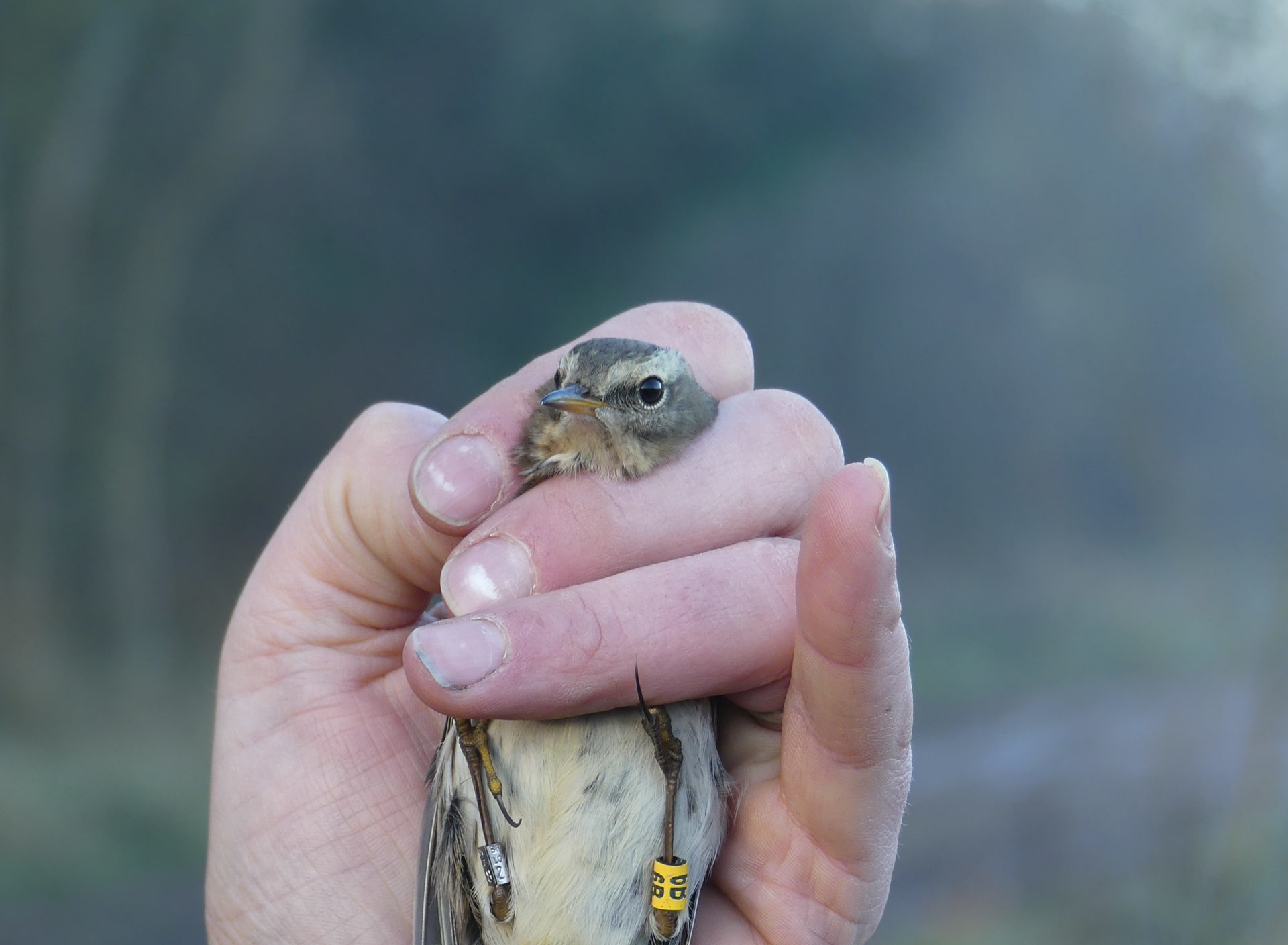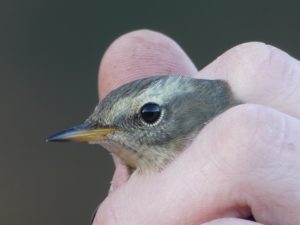


Headline photo credit: Denise and Chris Lamsdell
We have joined the National Water Pipit project – a monitoring programme to better understand the number and migratory behaviour of the incredibly small UK wintering Water Pipit population.
The freshwater marsh at Wild Ken Hill is a good site for the species, with up to fourteen birds recorded as present throughout December 2021. We’ve been able to put more effort into monitoring these birds only thanks to the help of Denise and Chris Lamsdell, who’ve been doing lots of great bird ringing work here over the last few months. You can read their great blogs here.
Water Pipits are rare migrant winter visitors to the UK, typically here from mid-October to mid-April. Water Pipits summer altitudinally in Europe, probably the French alps.
However, there is currently uncertainty around which specific breeding area in Europe is used by Water Pipits that migrate to the UK over winter. Usually, ringing birds with small metal rings embossed with unique codes would allow researchers to understand more about the number and migratory behaviour of Water Pipits.
But the UK Water Pipit wintering population is incredibly small, which makes the ringing a challenge. The RSPB and BTO estimate the UK wintering population at around only 190-200 birds. This range comes with caveat of possibly being an underestimate, as many birds will winter on freshwater marshes, where access is often difficult due to ground conditions or restricted due to lack of public rights of way. Water Pipits also often flush early if being approached and will intermix with Meadow Pipit flocks in winter, sometimes making identification difficult.
Nevertheless, prior to the establishment of the National Water Pipit project, only a total of 238 Water Pipits had been ringed in the UK since 1909.
The standard BTO metal rings fitted to the birds are small and the unique codes are difficult to read without a bird being re-captured. So birds must be re-trapped if we are to understand their behaviour better.
Looking at the records of ringed birds, we understand that only seven UK-ringed Water Pipits have been re-trapped after ringing. One of these was in the Netherlands, the autumn after it had been ringed wintering in the UK at Rye Meads, Hertfordshire – presumably on its way back to winter in the UK. But none have ever been re-trapped in a region of Europe that would indicate where our wintering birds breed to date.

Water Pipit being ringed at Wild Ken Hill
To combat some of these problems, the National Water Pipit project was formed. This started as a local project in Surrey, which was expanded in 2020 to include other sites. It now incorporates sites in Merseyside, South Wales, Cornwall, Dorset, Lincolnshire, Cambridgeshire, Suffolk, Norfolk, and of course Surrey where the project started. The Surrey wing of the project is also now using individually-coded yellow colour rings to assist in-field identification without the need for re-capture.
This effort has already increased the number of re-recorded UK-ringed Water Pipits by 17, more than doubling the number of records in the last 120 years!
In addition, it is giving a better understanding of the numbers of Water Pipits at some of the UK sites involved in the project through the number of un-ringed birds present versus those ringed. It is also showing that birds seem to return to the sites at which they were ringed with re-sightings at project locations including birds ringed in the previous season.
We think this is a really exciting project to be joining. It should make a real contribution to our scientific understanding of these birds, allowing us to improve future conservation decisions. Given the site fidelity of Water Pipits, we hope that we can play a role in helping to develop a better understanding of these intriguing winter visitors’ behaviour and movements.